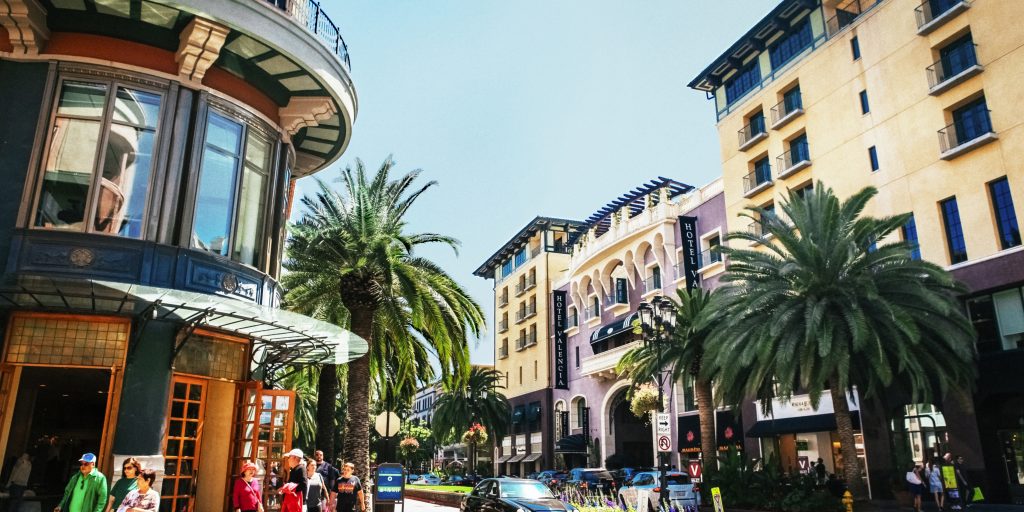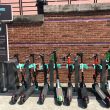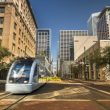Building back better starts by addressing the systems that move us
With the new presidential administration, many lofty goals to reshape American cities are seeing the light of day. Transportation Secretary Pete Buttigieg is already prioritizing plans that reimagine America’s urban landscape and address the inequities built into the national transportation system as part of President Biden’s “Build Back Better” plan. Yet, while work must continue at the national level to overhaul systemic inequities rooted in our physical infrastructure, we recognize that right now, several concrete steps exist to reimagine mobility in cities at the local level.
As American cities are reimagining life post COVID-19, many are coming to acknowledge just how many barriers stand in the way of living in truly equitable and inclusive communities—particularly through our transportation infrastructure. To ensure an equitable recovery post pandemic, and that cities are fit for the many different futures that they might meet, citymakers must engage with their communities to create a transportation system that works for all.
The city of San Jose, Calif., for example, has embarked on an ambitious, inclusive planning exercise to map out its transportation future and reimagine how investments can improve neighborhoods and address disparities. The San Jose Access and Mobility Plan (AMP), a joint effort with San Jose, Corinne Winter Consulting, Sam Schwartz Engineering, Toole Design Group, Cityfi, and Arup’s transportation planning, digital, and organizational change experts, outlines a set of strategies to address the city’s growth and decarbonization efforts, guide San Jose out of its driving culture, and introduce more environmentally friendly modes of transportation.
The new transportation vision, focused on equity, data-driven decision making and innovation, will ultimately create a road map for meeting San Jose’s goal to increase walking, biking and transit from 24 percent of trips today to 60 percent of trips in 2040. The AMP calls for building new bike lanes, rail lines and bus service. These improvements will transform San Jose into the ideal 20-minute city, one that reduces pollution and increases affordable public transport options in historically underserved communities.
Given San Jose’s success in engaging with the community on the AMP, other U.S. cities might consider taking a similar approach. At Arup, we started by mapping the city’s key performance indicators and then partnering with community-based organizations to get public input on how to create a system for mobility that works well for all.
From an initial public workshop for AMP, we learned that two thirds of the respondents do not use buses or light rail due to limited and inconsistent transit service, further highlighting how disjointed public transit has a direct impact on an individual’s access to opportunities. Keeping this in mind, the plan will enhance social cohesion and ensure everyone—especially those historically excluded from opportunities—has access to the same locations and can participate in community life.
In implementing the plan, the City of San Jose will look to enhance its transit system and provide access to key destinations, supporting the movement of a large number of people quickly, safely, affordably and with minimum environmental impact. Like many cities where the pandemic aggravated social and health disparities, San Jose is responding by prioritizing safe access to services and opportunities for its most disadvantaged communities.
Biking and walking are the most overlooked and underfunded modes of transportation. In San Jose, nearly half of community respondents reference bike route safety and bike parking as reasons for not cycling. Meanwhile, 33 percent of respondents reported not feeling safe on bike routes, while 20 percent don’t even have direct access to dedicated bicycle lanes. Further, 70 percent said they have never tried using electric bikes but would if they were more affordable and accessible. Safer and more accessible walkways and bike paths would, in the long term, reduce carbon emissions from cars and decrease congestion.
The San Jose Access and Mobility Plan will impact city residents and future generations for years to come. A model for positive change, San Jose is taking direct action to address climate impacts and confront the reality of inequities within its mobility networks.
As we build back better and address the pandemic’s impact on our communities, American cities must first reimagine the systems that move us—for a healthier, more sustainable and accessible future.
Kate White is an associate principal and planning policy practice leader at Arup where she develops large-scale, sustainable urban projects. She has spent two decades in the sustainable development field and prior to Arup was appointed to deputy secretary of Environmental Policy and Housing Coordination by former California Governor Edmund G. Brown Jr.




















